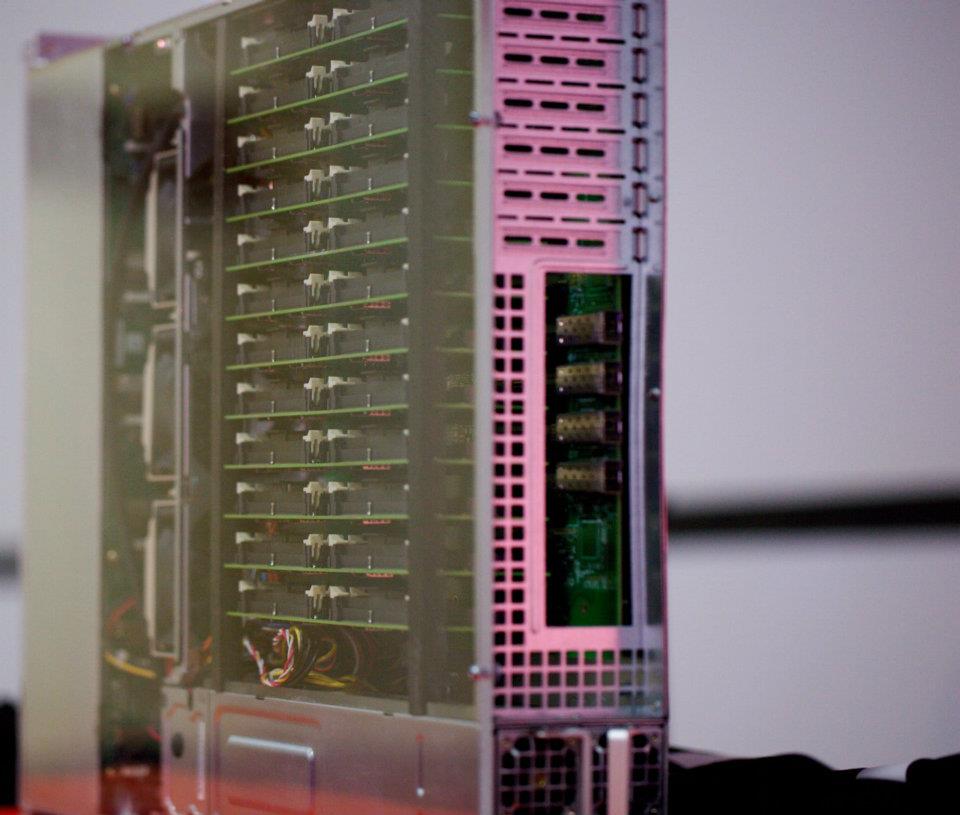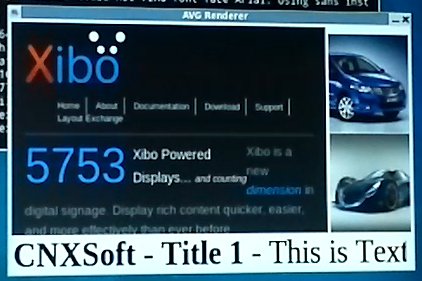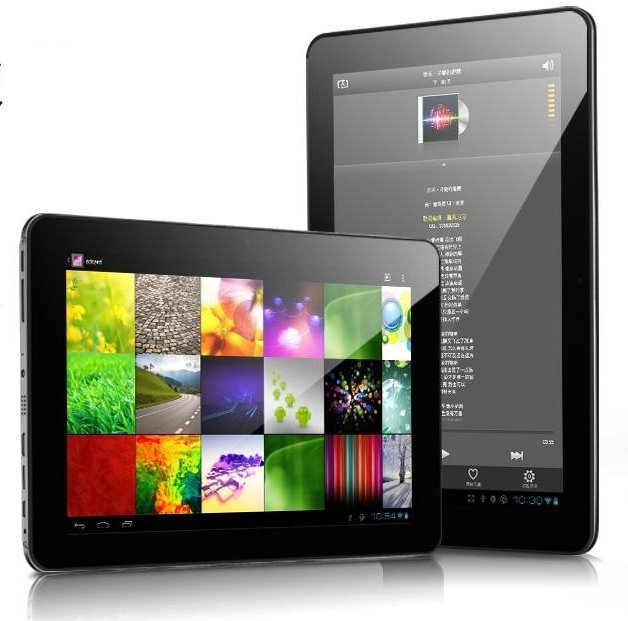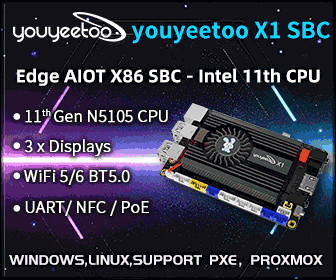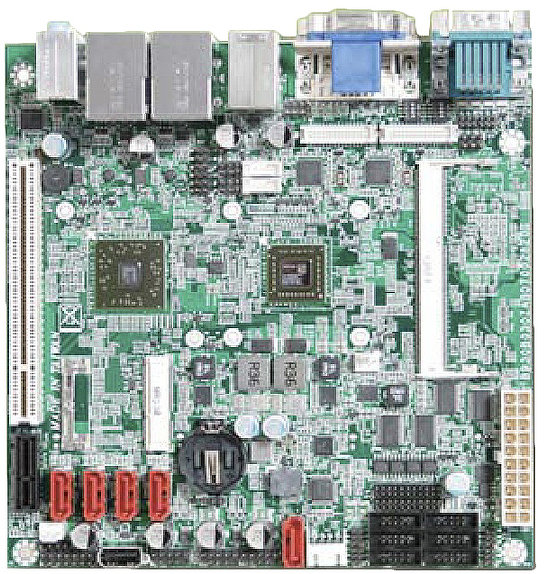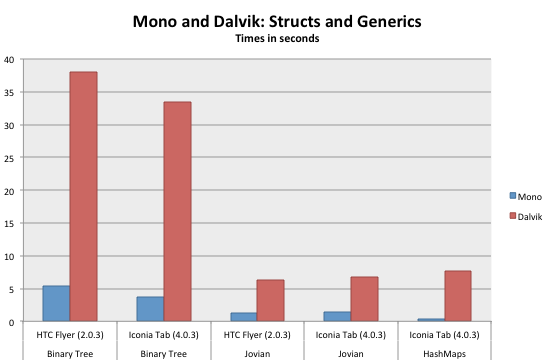Last November, Calxeda announced its 32-bit ARM Chip for servers, and now there are been some good progress as Calxeda is currently showcasing a 192-core ARM Server running Ubuntu 12.04 LTS Server edition at the Ubuntu Developer Summit in Oakland, California. The server showcased has 192 cores (48 Calxeda EnergyCore quad core Cortex-A9 processors), consumes less than 300 Watts, supports up to 24 SATA drivers and runs Ubuntu 12.04 with OpenStack’s cloud management infrastructure. Karl Freund, Calxeda Vice President of Marketing said that the Calxeda server is running “a standard LAMP stack (running Calxeda’s website) along with other popular web frameworks such as node.js and Ruby on Rails, provisioning of OpenStack Nova compute instances, and even Canonical’s Metal-as-a-Service bare-metal provisioning.” The company also explained that a complete native build of the Ubuntu 12.04 kernel took less than an hour to build on a single node, 4 times faster than the […]
Detect Mobile Devices with WURFL in Websites and Mobile Apps
When designing a mobile application or webpage, you may want to know exactly to know what devices access your site or run your application for example to differentiate automatically between desktops, laptops, tablets and smartphones and provide a user interface which is appropriate for a given screen size. This can be achieved with WURFL (Wireless Universal Resource FiLe), a Device Description Repository (DDR). This software component maps HTTP Request headers to the profile of the HTTP client (Desktop, Mobile Device, Tablet, etc.) and provides a description of the capability of the device that made the request. WURFL repository is an xml file (wurfl.xml – Direct links to version 2.3.1: wurfl-2.3.1.zip or wurfl-2.3.1.xml.tar) containing the definition of thousand of devices which can be access using the WURFL APIs. Several large Internet companies such as Facebook and Google are using WURFL, and ScientiaMobile, the company behind WURFL, claims that it is the […]
Importing Source Code to Github
Github is a hosting service for software development projects using the Git revision control system. GitHub offers free accounts for open source projects (public repositories) and commercial plans for private repositories. I’ve been using github for a while to clone source code, but I had never imported existing source code to github. Here are the steps to follow: If you don’t have an account yet, sign-up for github. Setup github for Linux, Windows or Mac OS X. Create a repository as shown as explained here. You should now have a URL in github, something like git@github.com:user/repo_name.git, which we’ll use below. Go to the directory with your existing source code and create a local repo:
|
1 2 3 |
git init git add . git commit -m "Initial commit" |
Finally, type the commands below to add your code to your new repository:
|
1 2 3 |
git remote add somename git@github.com:user/repo_name.git git pull git@github.com:user/repo_name.git git push somename master |
That’s it, anybody should now be able to clone you code as follows:
|
1 |
git clone git://github.com/user/repo_name.git |
NB: If your existing source code (or […]
Editing AllWinner A10 Board Configuration Files (script.bin)
AllWinner A10 based devices all have board configuration files in binary format, sometimes refereed to as script.bin, evb.bin, sys_config.{product_nane}.bin store in the FAT partition with the kernel. You may want to decode those binary files to configure your hardware and/or disable/enable peripherals. For the Ubuntu image provided for the Mele A1000 set-top box, the file is called evb.bin and the two other files (mele.bin and sys_config1.mele_mod.bin) are not used. The filename can change since it is configurable in u-boot e.g.: load1=fatload mmc 0 43000000 evb.bin bootcmd=run load1 boot_mmc If you want to decrypt the binary files into text format (fex), you can retrieve bin2fex tool: git clone https://github.com/amery/sunxi-tools Build it: cd sunxi-tools make This will compile both bin2fex (binary to fex text files) and fex2bin (fex files to bin), but the later does not seem to work right now. fex2bin also works now. If you want to decrypt a configuration […]
Xibo Digital Signage Running on Mele A1000 AllWinner A10 Set-Top Box
Those following my blog know that I recently bought a Mele A1000 to play around. For those who are not familiar with this device, the Mele A1000 is a $70 Android set-top box featuring an AllWinner A10 cortex A8 processor and lots of peripherals, and it can easily be hacked to run a Linux distributions. This hardware would also be a great digital signage player thanks to its video playback capabilities: up to 2160p video decoding and 1080p video output. Last year, I ported Xibo, an open source digital signage player, to ARM and ran it in the Beagleboard emulator (qemu), but I hadn’t had the opportunity to try it out in a real hardware. I’ve tried this rootfs based on Linaro ARM Linux Internet Platform (ALIP) image for BeagleBoard in the Mele A1000, by following an adaptation of the method I provided earlier. For this demo, I created a […]
Cube U30GT Android 4.0 10.1″ Tablet Powered by Rockchip RK3066
Alldocube Technology and Science will manufacture one of the first Android 4.0 tablet based on the new Rockchip RK3066 Dual Cortex A9 Processor: the Cube U30GT which will sell under 51cube.com brand. Here are the specs of the device: CPU – RK3066, Cortex-A9 Dual Core processor 1.6 GHz GPU – Quad Core Mali 400 with OpenGL ES 2.0/1.1, OpenVG1.1 RAM – 1GB DDR3 Storage – 16 GB NAND FAST / microSD Card slot (Support up to 32G) Display – 10.1″ capacitive touch screen (1280×800) Camera: 2.0 MPixel front camera 2.0 MPixel rear camera Sensors – 4-way G-sensor Connectivity – Wi-Fi b/g, Bluetooth and 3G (via external 3G dongle). Battery – Up to 4 hours movie playback,up to 12 hours music playback and up to 6 hours web page browsing. Weight – 450 grams Charbax discovered this tablet last month in Hong Kong. You can watch the video below to have a closer […]
Portwell AMDY-7000 Series Mini-ITX Boards Based on AMD Embedded Processors
American Portwell Technology has announced the AMDY-7000 Series Mini-ITX embedded system boards targeting applications that require high quality graphics output with low power consumption such as digital signage, surveillance security monitoring, point of sales (PoS) and more. The company provides 3 families of AMDY-7000 series mini-ITX boards: AMDY-7000 – Single-core AMD Athlon II Neo R44L processor. AMDY-7001 – Dual-core AMD Turion II Neo N54H, AMD Athlon II Neo N36L or single-core AMD Athlon II Neo R44L processor. AMDY-7002 – Dual-core AMD Fusion G T56N processor. The AMDY-7000/7001/7002 Series models are powered by AMD Fusion processors featuring ATI HD 6320 and HD 4200 GPU. Depending upon the model, the power consumption ranges from a 12W to 25W. All boards can support up to 8GB DDR3 SO-DIMM memory, dual display via VGA/DVI/HDMI/LVDS and dual LVDS (AMDY-7002 only), PCIe x1, PCIe x16 or half-size mini-PCIe depending on the model and dual Gbit Ethernet. […]
Xamarin Ported Android to C#. Results: Massive Performance Improvements over Dalvik
Xamarin has been providing Mono, a C# framework that can work on Linux for some years, and more recently they have also launched Mono for Android and iOS so that you can write or re-use existing C# application on the most common samrtphone platforms. But their latest project “XobotOS Research Project” goes much further, as they have entirely re-written Android Dalvik engine based on Java with C#. Considering the million of lines of code in Android, they have found a tool to automatize the Java to C# conversion. This tool is an Eclipse plugin called is Sharpen, and Xamarin has made further improvements to Sharpen which are available on Github. They already have ported Android 2.x and Android 4.0 to C#. If you wonder why they would do that, look at the “benchmarks” below showing Mono vs. Dalvik implementation of Android for binary tree, jovian and hashtags. Since the company […]


